Back in 2010, Remedy Entertainment introduced the world to Alan Wake, a unique, narrative-driven survival horror-esque adventure that quickly achieved cult status. In it, you play as the titular horror novelist as he and his wife Alice vacation in Bright Falls, Washington, until all hell breaks loose and you must fight for survival and solve the mystery around the dreary Cauldron Lake. Gamers clamored for more even after the original’s expansions, and had their appetites only slightly satiated with 2021’s Alan Wake Remastered, a high-res version of the game on modern consoles on PC. It wouldn’t be until the 2021 Game Awards that Remedy finally announced their return to Bright Falls after thirteen long years in a massively anticipated sequel, and that day has finally come. Read on for our Alan Wake II review!
This review will be as spoiler free as possible.
“A Little Heavy on the Metaphors, Maybe.”
In Alan Wake II, players take control of Saga Anderson, a veteran FBI agent sent to Bright Falls, WA to investigate a series of brutal ritual murders. Accompanied by her partner Alex Casey (portrayed by series creative director Sam Lake), who just so happens to share a name with the protagonist of Wake’s horror novels, the duo team up with some new and familiar faces to uncover the mystery surrounding the Cult of the Tree, all the while Alan Wake himself struggles to escape the Dark Place and overcome his evil doppelganger Mr. Scratch.
A few hours in, Alan Wake II divides the narrative by allowing the players to choose between Saga or Alan’s stories, and switch back at will. You can play through one character’s arc in full or alternate chapters and still understand the story. There is a stopping point for each campaign that requires you to progress the other character’s story, culminating in an amazing and harrowing finale.
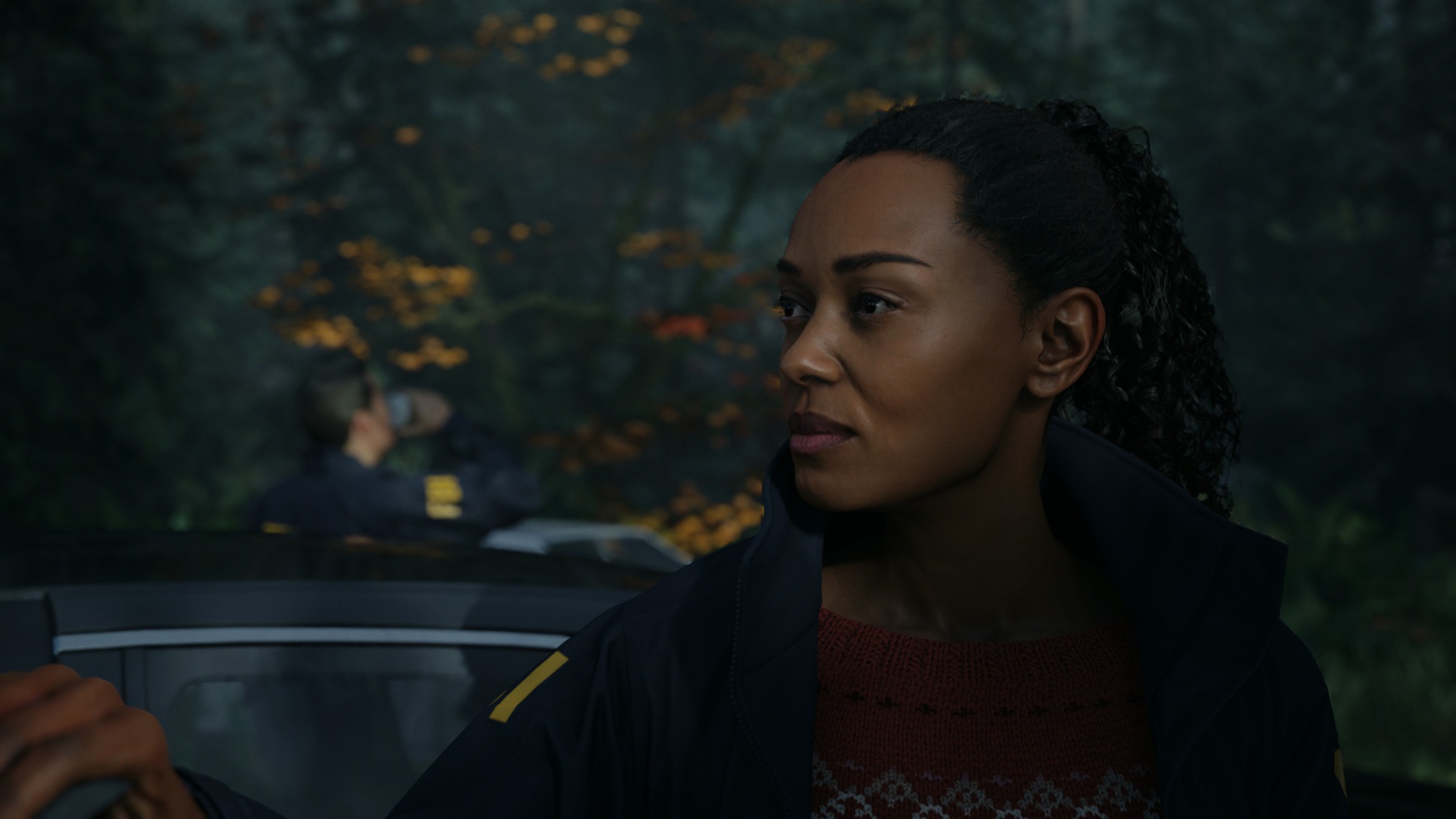
It’s safe to say the original Alan Wake drew heavy inspiration from uncanny cult stories like that of Twin Peaks and countless Stephen King works, and the sequel is no different. This game is Remedy’s first jaunt into the survival horror genre, and, despite a long run time compared to other spooky titles on the market, is quite the memorable experience. Blending together supernatural horror and true crime drama à la True Detective, Alan Wake II boasts an impressive story on a much larger scale than the original. Most (if not all) cutscenes impressively splice together live action scenes and motion-captured animation that further serve as a testament to the narrative’s highly stylized and esoteric quality. Jump scares abound, albeit possibly a little heavy handed at times, and truly create an atmosphere of dread. Fans of Remedy’s past titles can also expect some nice Easter eggs, and players of 2019’s Control have a lot to look forward to this go around.
The antithesis of horror is knowing, and Alan Wake II does a good job of keeping the player in the dark (pun fully intended) throughout its roughly thirty-hour run time. There are plenty of optional expositional moments, such as the Koskela brothers’ goofy commercials and Pat Maine’s radio show that give subtle hints to where the story is headed. Upon starting a second playthrough, you’ll notice that much of this dialogue is foreshadowing of events to come.
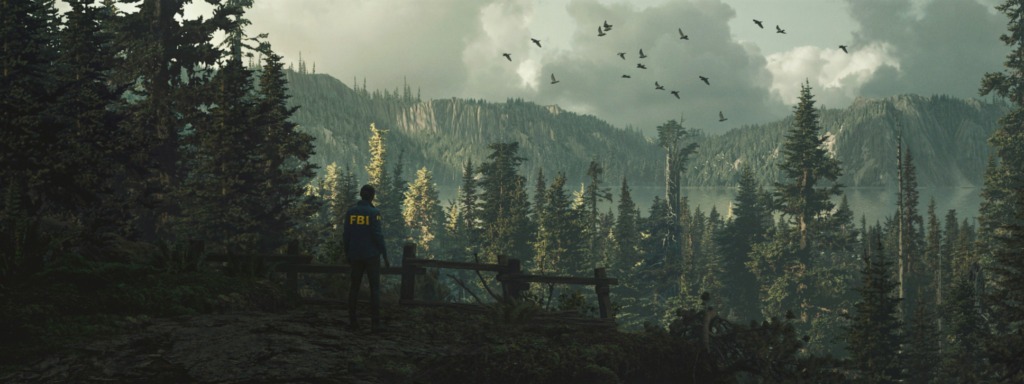
Despite a well-crafted narrative, many of the voice performances leave much to be desired. Melanie Liburd lends her voice and face to Saga’s character, but her American accent is rough. She’ll slip in and out of her native British accent frequently, which really harms the game’s immersion. Similarly, during the live action sequences, Alan (Ilka Villi once again returns to lend his face to the iconic character) and Alex’s face models require that their voices be dubbed. While this is no fault of the actors, the syncing and timing were often misaligned and is extremely noticeable. Both Ilka Villi and Sam Lake are given the brief opportunity to use their native accents for new characters, and their performances are natural and fit well within the rest of the story.
Monsters Wear Many Faces
Alan Wake II‘s gameplay loop is familiar ground, which is a good choice for a narrative-driven game. In typical survival horror fashion, you can expect limited resources, tight maneuverable space, and unrelenting enemy encounters. The game also really rewards exploration. I found myself with a full inventory (even with slot upgrades) much of my playthrough, often having to backtrack to a safe zone to store items in a shoebox, the game’s storage boxes. This is due mostly in part to my desire to explore every nook and cranny of the game’s world, as I came across countless Nursery Rhyme puzzles that rewarded me with Charm’s that boost Saga’s combat abilities, Cult stash boxes for the aforementioned loot, or containers scattered throughout that contain other various resources. You can play through the game just fine without much optional exploration, but keep in mind you may be at a loss for the odd enemy encounter. Luckily, boss battle arena design is generous and will have ammo and healing items for you grab. I always had plenty in my arsenal to make it through.
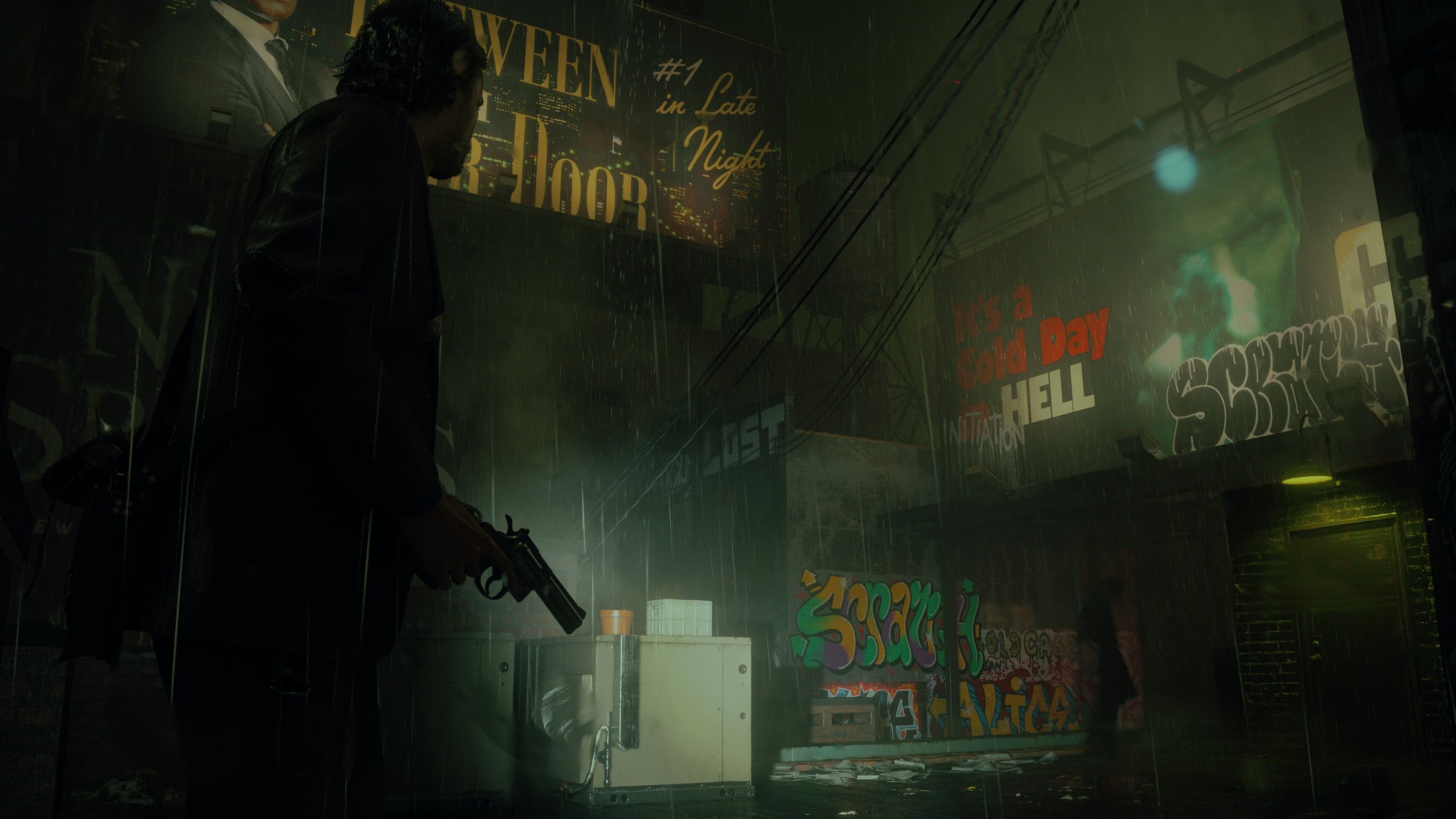
One glaring omission from this, a modern video game, is the lack of some sort of fast travel or mini-map. I understand the lack of both is a creative decision used to further enhance the horror experience, but from a gamer’s perspective who has limited time, venturing back and forth for a collectible added significant time to my playthrough that could otherwise have been mitigated by a simple click on the map.
Combat has heavy reliance on your flashlight, just like the original. To weaken an enemy, you’ll need to focus the light on them to destroy their Darkness Shield, which may reveal a Source Point, their weak spot, to take advantage of. Be weary, however, as even regularly encountered enemies can take quite a punch. Also, good luck with those damn wolves. Combat is satisfying, and there is a bit of a learning curve, but you’ll be one-shotting Taken with the crossbow in no time. Just be sure to conserve your flashlight batteries.
Alan Wake II‘s newest gameplay features are the Mind Place and Writer’s Room, a mental space Saga and Alan can retreat to in order to check out clues or change the Dark Place plot, respectively. The Mind Place is Saga’s version of the Mind Palace technique, a real-life memory enhancement and visualization strategy FBI agents use, where she can upgrade her weapons, profile other characters, and, most importantly, study her Case Board. If you’ve ever the seen the It’s Always Sunny in Philadelphia meme of Charlie obsessing over a board of images connected through yarn, then you know what to expect here. Throughout her story, you’ll encounter clues and hints that need to be placed in the correct spot on the board to deduce and solve cases, which move the story along. It’s a clever mechanic at first, but is overall barebones. I never felt like I was doing any actual detective work, rather simply putting round pegs in round holes.
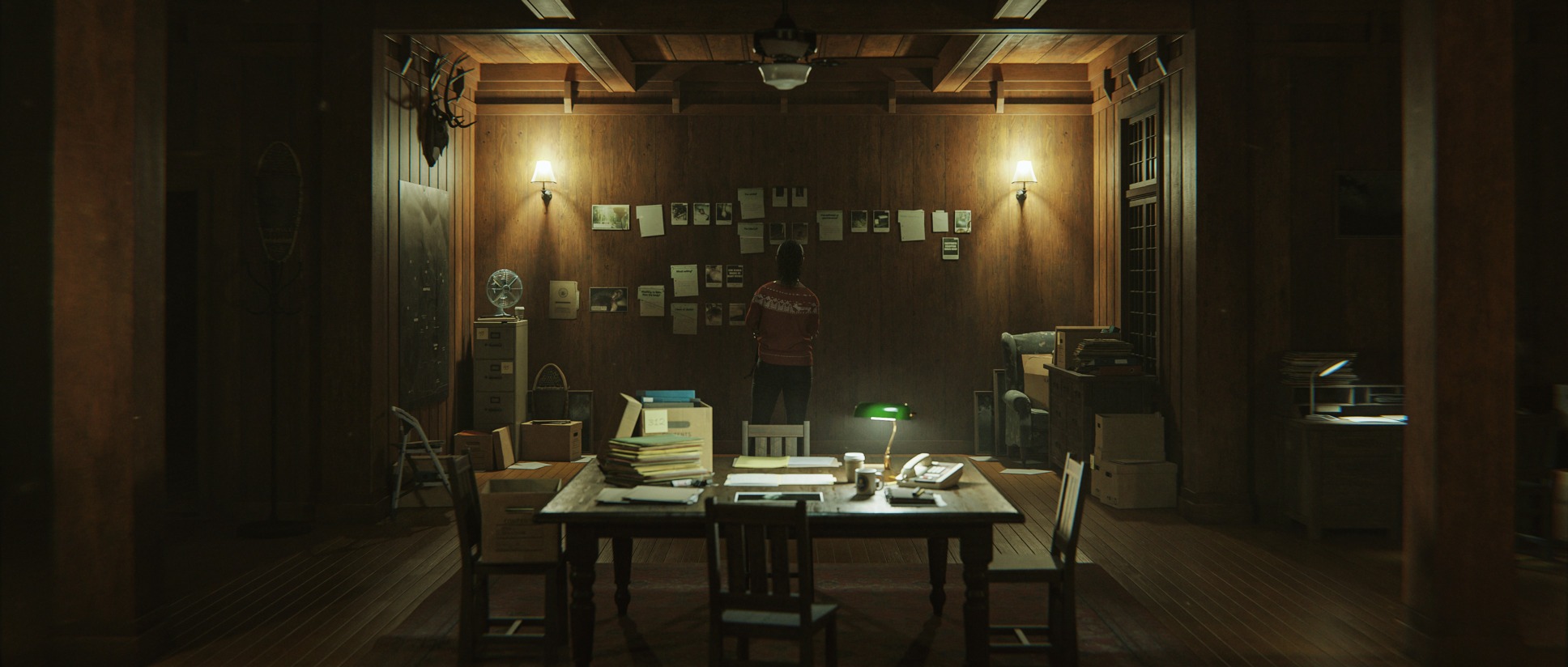
Alan’s Writer’s Room is much more immersive and informs his gameplay loop. While trapped in the Dark Place, Alan must write himself out by creating gruesome scenarios. These scenarios are brought to life by altering them on the Plot Board in the Writer’s Room, completely changing the environments and atmosphere at the click of a typewriter. Doing this usually opens up new paths for Alan to take, and often come with intricate puzzles that players must solve using intuitive environmental observation. Experiencing the plot board puzzles is definitely the highlight of Alan’s chapters.
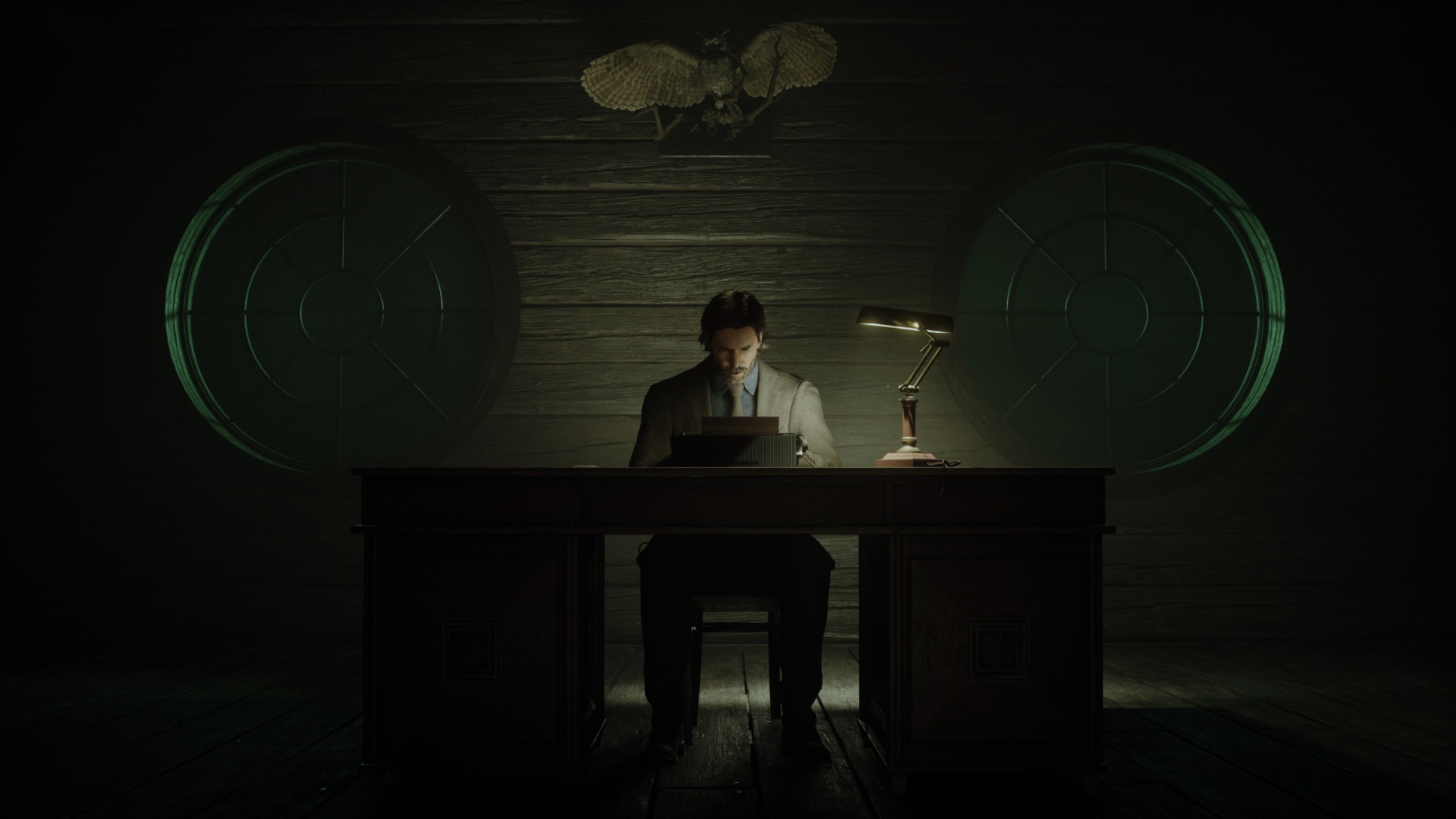
Unfortunately, I did experience a handful of bugs that required me to restart the game and lose progress, although checkpoints are generous and I’d only lose about ten to twenty minutes. These bugs did happen often enough to become frustrating, such as being unable to exit the Case Board, being stuck aiming my flashlight, thus rendering me unable to sprint or aim my weapon, or a character T-posing mid-dialogue during a critical story moment. Hopefully Remedy can patch these up soon.
Sights and Sounds
A pillar of strong horror is quality sound design, and Alan Wake II has it in spades. Looking past the questionable voice acting, the game’s horror atmosphere is cranked up to eleven through the use of eerie sound effects while exploring, the gruesome cries of the Taken, and the impressive original soundtrack used throughout. The game uses music as a plot device, and one the best gaming moments of the year involves you essentially playing through a live musical, complete with lyrics specific to the story and face-melting guitar solos. Oh, and Alan Wake does a choreographed dance. You’re in for quite a treat when you get to this chapter.
Visually, the game is gorgeous. I played on PS5 on a 4K TV, and started using the game’s Quality mode locked at 30 FPS and occasional dips. After a few hours I switched to Performance mode, and the experience vastly improved; this mode prioritizes 60 FPS and an output resolution of 1440p. There are no glaring visual concerns. Something to mention are the impressive facial animations, which at times can be indistinguishable from the blended-in live action sequences.
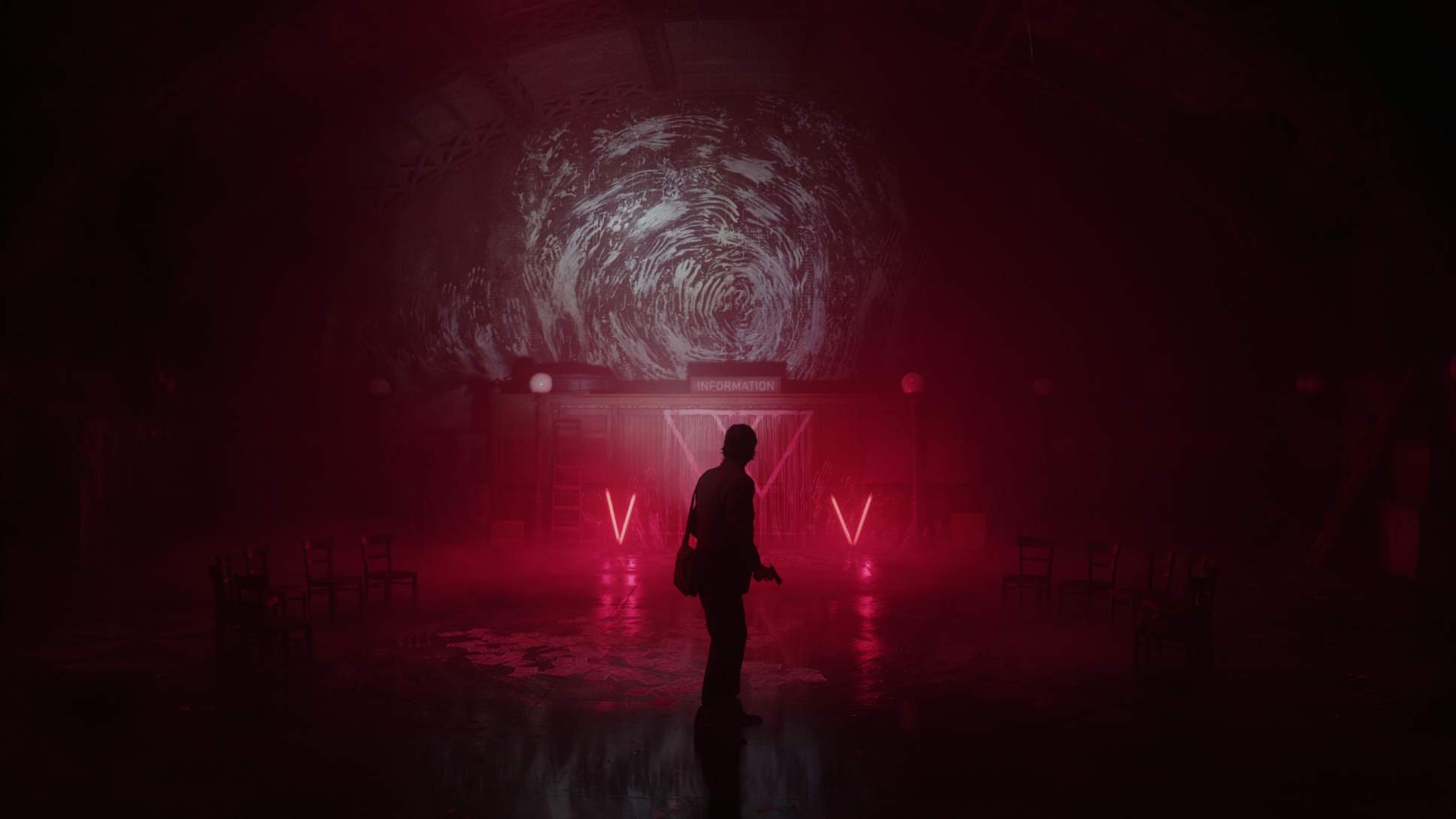
Verdict
After over a decade-long hiatus, Alan Wake finally gets a much-deserved sequel. Being Remedy’s first true take on the survival horror genre, Alan Wake II serves as a benchmark for the series going forward, and is another impressive entry into their shared universe with heavy ties to Control. Some issues with bugs and voiceovers are a big detriment to immersion, but the supernatural story and true crime elements are where the game shines. Add that to its tight gameplay and masterful sound design, and you get one of the best games of 2023. Alan Wake II is an experience that will stick with you long after you roll credits.
You can look forward to two announced expansions: Night Springs coming Spring 2024, and The Lakehouse, date to be determined.
Reviewed on PS5. Game code provided by publisher.
Check out Temple of Geek’s other reviews!

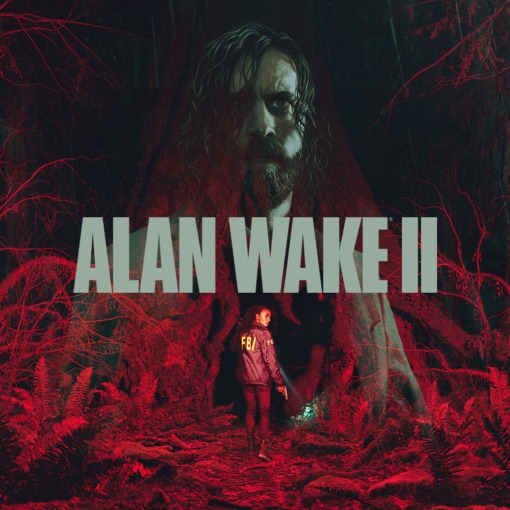





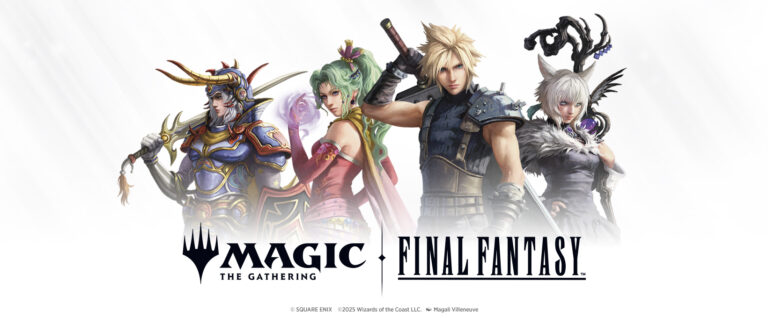


One thought on “Alan Wake II Review”